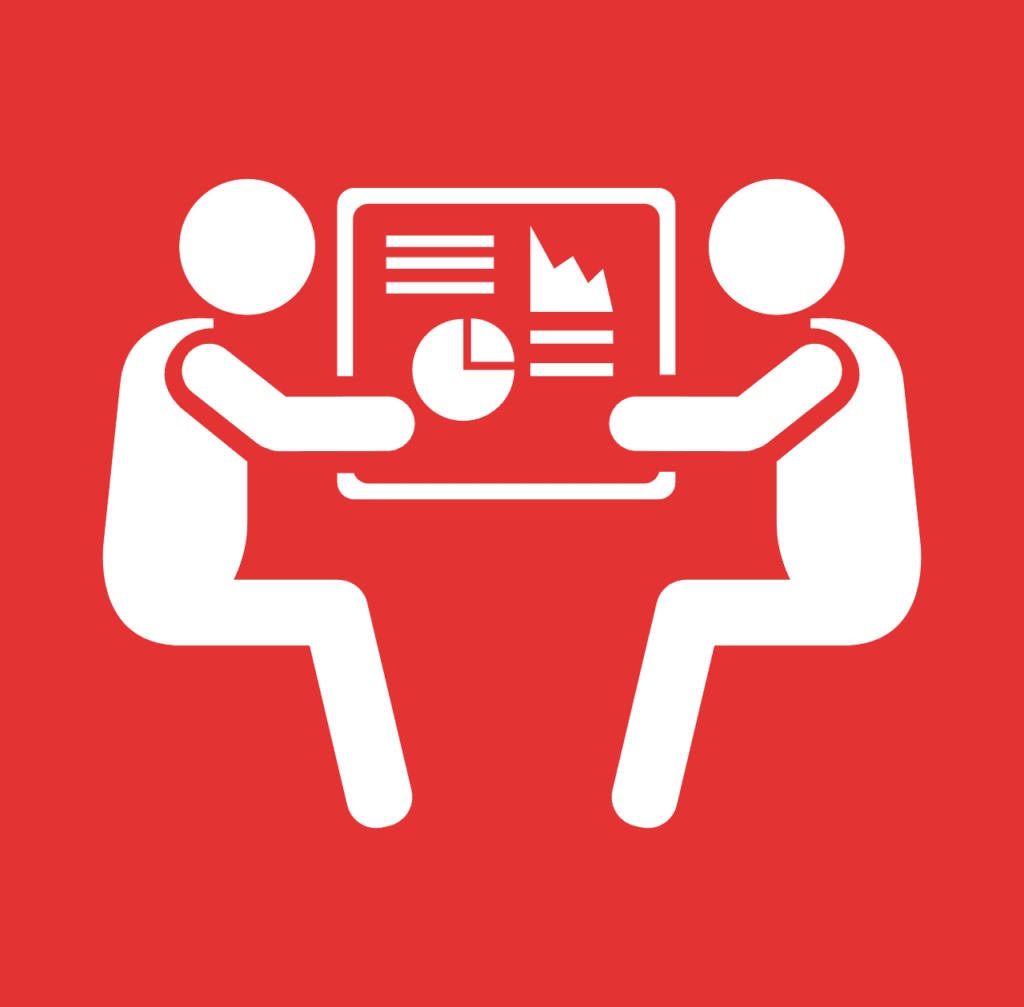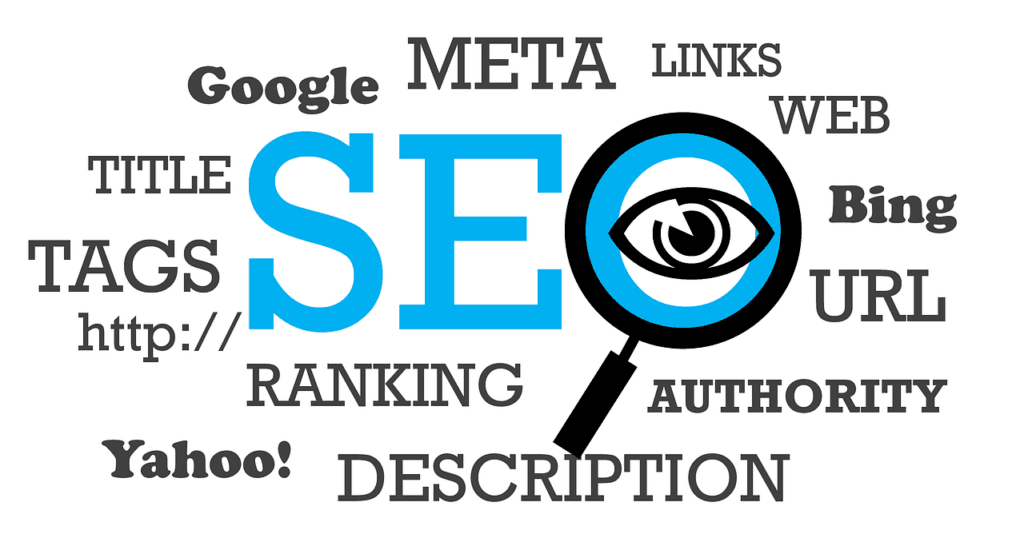This Article has been revised, edited and added to, by Poulomi Chakraborty.
- The Foundations: Understanding Conversion Tracking
- What is Conversion Tracking?
- Why is it Crucial for Booking Engines?
- The Tools of the Trade
- The Strategic Imperative of Precision in Conversion Tracking
- Crafting a Custom Conversion Vocabulary
- The Dual Lenses of Conversion Tracking: Quantitative and Qualitative Insights
- Integrating Conversion Tracking with Broader Business Goals
- The Role of A/B Testing in Refining Conversion Strategies
- Elevating Conversion Tracking to a Strategic Pillar
- Setting Up Conversion Tracking for Booking Engines: A Step-by-Step Guide
- Define Your Conversion Goal
- Choose the Right Tracking Tool
- Set Up the Tracking Code
- Create and Monitor Conversion Funnels
- Linking Ad Campaigns (if applicable)
- Regularly Monitor and Optimize
- Establishing a Robust Infrastructure for Data Capture
- Customizing Tracking to Reflect Unique Business Processes
- Leveraging Data for Dynamic Customer Segmentation
- Integrating Conversion Tracking Across Marketing Channels
- Adopting a Culture of Continuous Optimization
- The Strategic Journey of Conversion Tracking Setup
- Advanced Conversion Tracking Techniques for Booking Engines
- Event Tracking for Micro-Conversions
- Enhanced E-commerce Tracking
- Cross-Domain Tracking
- Multi-Channel Funnels & Attribution Modeling
- Custom Audiences & Remarketing
- Integrating CRM Data
- Elevating Data Analysis with Predictive Analytics
- Enhancing User Experience with Behavioral Analytics
- Optimizing for Lifetime Value through Cohort Analysis
- Integrating Cross-Device Tracking for a Unified Customer View
- Utilizing Advanced Segmentation for Precision Targeting
- The Strategic Evolution of Conversion Tracking
- Diving Deeper: A Closer Look at Some Advanced Techniques
- Event Tracking: Beyond the Basics
- Enhanced E-commerce Tracking: Maximizing Insights
- Multi-Channel Funnels & Attribution Modeling: Deciphering the User Journey
- Custom Audiences & Remarketing: Personalizing the Approach
- Integrating CRM Data: The Bigger Picture
- Harnessing the Power of AI-Driven Analytics
- Exploiting Tag Management Systems for Agile Tracking
- Building a Data-Driven Culture with Visualization Tools
- Optimizing Conversion Paths with Machine Learning
- Leveraging Natural Language Processing for Enhanced Customer Insights
- A Strategic Blueprint for Advanced Conversion Tracking
- Conclusion: Mastering Conversion Tracking for Booking Engines
In the digital realm of the travel industry, where experiences begin long before the actual journey, the ‘booking’ stands as the most crucial touchpoint. It signifies a traveler’s commitment, and in business terms, it’s the moment where browsing transforms into revenue. But how do travel businesses ensure they’re optimizing their booking processes? More importantly, how do they measure the success rate of visitors converting into customers? Enter the world of conversion tracking for booking engines.
Conversion tracking offers a telescopic view into the customer journey. It’s not just about recognizing that a conversion happened, but about understanding the ‘how’ and ‘why’ behind it. With booking engines playing a pivotal role in the travel and hospitality sectors, having robust conversion tracking in place is non-negotiable.
In this comprehensive guide, we will journey through the intricacies of setting up conversion tracking tailored specifically for booking engines. Whether you’re a hotelier, a travel agency, or an adventure tour operator, this guide aims to simplify the technicalities and provide actionable steps towards perfecting your conversion tracking mechanism.
The Foundations: Understanding Conversion Tracking

Before diving into the setup process, it’s essential to grasp the core concepts behind conversion tracking.
What is Conversion Tracking?
In digital marketing lingo, a ‘conversion’ signifies a specific action that a business desires its users to take. In the context of booking engines, this usually refers to successful bookings. Conversion tracking, therefore, involves monitoring and analyzing these actions to derive insights and optimize strategies.
Why is it Crucial for Booking Engines?
For businesses in the travel industry, the booking engine is the heart of the revenue stream. Understanding its efficiency, recognizing potential pain points, and ensuring a seamless user experience can substantially impact profitability.
The Tools of the Trade
Several digital tools facilitate conversion tracking. From Google Analytics to specialized booking software solutions, understanding which tool aligns with your needs is the first step in the setup journey.
The Strategic Imperative of Precision in Conversion Tracking
In the bustling digital marketplace of the travel industry, the journey of a prospective traveler from interest to confirmed booking is fraught with decision points. For startups, particularly those venturing into the travel and hospitality sectors, the imperative lies not just in tracking conversions but in understanding each nuance of the customer’s journey. This precision in conversion tracking enables businesses to discern not merely the ‘what’ and ‘how’ but the intricate ‘why’ behind every booking.
Crafting a Custom Conversion Vocabulary
Before embarking on the technicalities of setting up conversion tracking, it’s crucial for startup founders to develop a bespoke conversion vocabulary. This tailored lexicon goes beyond the standard definitions of conversions and micro-conversions, encompassing a broader spectrum of user actions that are pivotal to the business model.
Whether it’s the initial interest indicated by a newsletter subscription, the engagement shown through interactive elements like virtual tours, or the final commitment of a booking, each action must be precisely defined and tracked.
The Dual Lenses of Conversion Tracking: Quantitative and Qualitative Insights
Quantitative Insights: The Numbers that Narrate Success
At its core, quantitative tracking offers a numerical representation of your booking engine’s performance. It’s about counting the clicks, bookings, and interactions, providing a macro-level view of your conversion landscape.
However, the strategic depth comes from not just tracking these numbers but analyzing them to identify trends, patterns, and anomalies. This data-driven approach empowers startup founders to make informed decisions, optimize their offerings, and tailor their marketing strategies to align with observable behaviors.
Qualitative Insights: Understanding the Emotional Journey
While numbers narrate the story of success in clear terms, the qualitative aspect of conversion tracking delves into the emotional and psychological journey of the prospective traveler. This involves analyzing the feedback on user interfaces, the ease of navigation, the clarity of information, and the overall user experience.
For startups, focusing on qualitative insights means understanding the friction points, the moments of delight, and the unmet needs that influence a traveler’s decision-making process. This nuanced understanding is critical for refining the user experience, crafting compelling narratives, and ultimately, enhancing conversion rates.
Integrating Conversion Tracking with Broader Business Goals
For travel startups, conversion tracking should not exist in isolation but as an integral part of the broader business strategy. This entails aligning conversion goals with key performance indicators (KPIs) such as customer acquisition cost (CAC), lifetime value (LTV), and customer satisfaction scores.
By doing so, startups can ensure that their efforts in optimizing the booking engine are directly contributing to the overarching objectives of growth, profitability, and customer loyalty.
The Role of A/B Testing in Refining Conversion Strategies
A/B testing emerges as a powerful tool in the arsenal of conversion optimization. By systematically testing variations in the booking process, landing pages, and promotional messages, startups can empirically determine what resonates with their target audience. This continuous process of testing, learning, and iterating allows for a data-driven approach to enhancing the user experience and maximizing conversion rates.
Elevating Conversion Tracking to a Strategic Pillar
In the digital age, where data reigns supreme, conversion tracking stands as a pivotal strategic pillar for travel startups. By delving deep into both the quantitative and qualitative aspects of the customer journey, startups can gain invaluable insights, refine their strategies, and craft experiences that not only convert but also enchant and retain travelers.
The journey of setting up and optimizing conversion tracking is ongoing, demanding a blend of strategic foresight, technical acuity, and a relentless focus on the customer. In this endeavor, the rewards are manifold, promising not just increased bookings but the cultivation of lasting customer relationships.
Setting Up Conversion Tracking for Booking Engines: A Step-by-Step Guide

Define Your Conversion Goal
Every journey begins with a destination in mind, and in the realm of conversion tracking, your goal is that destination. For booking engines, the primary conversion goal is typically a successful booking. However, you might also have secondary goals such as newsletter sign-ups, inquiry form submissions, or downloading a brochure.
Insight Tip: While the actual booking is the main conversion, don’t neglect the smaller actions that lead up to it. These micro-conversions can provide additional insights into user behavior.
Choose the Right Tracking Tool
There are multiple tools available for conversion tracking. One of the most popular and comprehensive tools is Google Analytics. Its flexibility and integration capabilities make it a favorite among businesses of all sizes.
Insight Tip: If you’re using a specialized booking platform, check if it has built-in analytics or if it supports integration with popular analytics tools.
Set Up the Tracking Code
Once you’ve chosen a tool, the next step involves embedding a tracking code onto your website. This code will monitor user actions and relay the data back to your analytics tool.
- For Google Analytics:
- Sign in to your account.
- Navigate to the ‘Admin’ section.
- Under the desired account, go to ‘Tracking Info’ and then ‘Tracking Code’.
- Implement this code on every page of your website, preferably in the header.
Insight Tip: Always check the tracking code’s functionality post-implementation. Tools like Google Tag Assistant can help validate the setup.
Create and Monitor Conversion Funnels
A conversion funnel illustrates the path a user takes leading up to the conversion. For booking engines, this might start with landing on your homepage, browsing packages or rooms, viewing pricing, and finally making a booking.
By setting up a funnel in your analytics tool, you can identify where potential customers might be dropping off and optimize these stages accordingly.
Insight Tip: Regularly review and adjust your conversion funnels. As user behavior evolves or as you make changes to your booking process, the funnel dynamics may shift.
Linking Ad Campaigns (if applicable)
If you’re running paid ad campaigns to drive traffic to your booking platform, linking them to your conversion tracking setup is crucial. This allows you to measure the ROI of your ad spend accurately.
For platforms like Google Ads:
- Link your Google Analytics account with your Google Ads account.
- Ensure that you’ve enabled auto-tagging in Google Ads for seamless data integration.
Insight Tip: Monitor which ad campaigns or keywords drive the most conversions. This data is invaluable for future campaign optimization.
Regularly Monitor and Optimize
Once everything is set up, the journey isn’t over. Regularly reviewing the collected data, understanding user behavior, and making necessary adjustments to your booking engine or marketing strategies is essential.
Insight Tip: Consider setting up monthly or quarterly review sessions. Analyze the data, understand the trends, and strategize accordingly.
Establishing a Robust Infrastructure for Data Capture
The journey of setting up conversion tracking is akin to laying the foundation for a building. It’s about creating a robust infrastructure that not only supports the current needs but is scalable for future growth. For travel startups, this means selecting a tracking tool that offers both depth in analytics and flexibility in integration.
The choice of tool should be guided by the complexity of your booking engine, the volume of data you anticipate handling, and the granularity of insights you aim to achieve.
Beyond the selection, the implementation requires a meticulous approach, ensuring that every piece of code is accurately placed and functional across all pages and platforms, thereby guaranteeing a seamless capture of data across the customer journey.
Customizing Tracking to Reflect Unique Business Processes

Within the realm of travel and hospitality, no two businesses are the same. Each startup has its unique processes, customer engagement strategies, and success metrics. As such, a one-size-fits-all approach to conversion tracking falls short. The strategic imperative lies in customizing your tracking setup to reflect the unique contours of your business model.
This involves defining custom events that are critical to your booking engine, such as specific searches, customization of travel packages, or the use of loyalty points. By tailoring the tracking setup to these unique interactions, startups can gain deeper insights into customer behavior and preferences, facilitating more informed decision-making and strategy development.
Leveraging Data for Dynamic Customer Segmentation
In the digital age, data is not just a record of past actions but a beacon guiding future strategies. For travel startups, the data captured through conversion tracking serves as a rich resource for dynamic customer segmentation. This involves categorizing customers not just based on demographic parameters but on their behavior, preferences, and engagement patterns with the booking engine.
By analyzing this data, startups can create highly targeted marketing campaigns, tailor the booking experience to meet the expectations of different segments, and ultimately, enhance the effectiveness of their conversion strategies.
Integrating Conversion Tracking Across Marketing Channels
In the multifaceted digital ecosystem, customers interact with brands across multiple channels before making a booking decision. Therefore, integrating conversion tracking across all marketing channels is critical for a holistic understanding of the customer journey.
This strategic integration allows startups to track the performance of each channel, understand the interplay between different touchpoints, and optimize their marketing mix accordingly. Whether it’s social media, email marketing, or paid search campaigns, each channel’s data contributes to a comprehensive view of how customers discover, engage with, and convert on the booking engine.
Adopting a Culture of Continuous Optimization
The setup of conversion tracking is not a one-time task but the beginning of an ongoing process of optimization. In the dynamic landscape of digital marketing, where customer behaviors and market trends evolve rapidly, startups must adopt a culture of continuous optimization. This entails regular reviews of tracking data, experimentation with new strategies, and refinement of existing processes based on actionable insights.
Whether it’s tweaking the design of the booking engine, adjusting the targeting parameters of marketing campaigns, or enhancing the customer support experience, every decision should be data-driven, aimed at incrementally improving conversion rates and customer satisfaction.
The Strategic Journey of Conversion Tracking Setup
For travel startups, the setup of conversion tracking is more than a technical exercise; it’s a strategic journey that lays the groundwork for data-driven decision-making, customer-centric optimization, and sustainable growth.
By building a robust data capture infrastructure, customizing tracking to business specifics, leveraging data for segmentation, integrating across channels, and fostering a culture of continuous optimization, startups can not only enhance their booking engine’s performance but also position themselves for success in the competitive digital travel market.

Related: Check out our free SEO suite

Advanced Conversion Tracking Techniques for Booking Engines
The world of digital analytics is ever-evolving, and while the foundational steps lay the groundwork for effective conversion tracking, delving into advanced techniques can provide deeper insights, better segmentation, and more tailored user experiences. Let’s explore these sophisticated tactics.
Event Tracking for Micro-Conversions
While the final booking is your primary conversion, understanding micro-conversions, or smaller actions leading up to the final booking, can be incredibly insightful. Event tracking can monitor:
- Video plays (e.g., property tours, travel vlogs)
- Clicks on specific offers or deals
- Interaction with chatbots or customer support widgets
Insight Tip: Tools like Google Tag Manager make event tracking easier by allowing you to set up tags and triggers without diving deep into code.
Enhanced E-commerce Tracking

Especially pertinent for booking engines, enhanced e-commerce tracking in platforms like Google Analytics provides granular data regarding user behavior in the buying process. This includes:
- Viewing product details (e.g., room descriptions, tour packages)
- Additions to and removals from a cart
- Checkout behavior
Insight Tip: Beyond just understanding conversions, enhanced e-commerce tracking offers insights into average order value, cart abandonment rate, and product affinity.
Cross-Domain Tracking
If your booking process involves multiple domains (for instance, a separate payment gateway domain), cross-domain tracking ensures that user journeys are tracked seamlessly across all involved websites.
Insight Tip: Ensure consistent tracking setups across domains to avoid data discrepancies and use tools like Google Tag Manager for a smoother setup.
Multi-Channel Funnels & Attribution Modeling
Travelers rarely convert on their first visit. They might discover your site via a blog post, return through a social media ad, and finally book after a remarketing campaign. Understanding this multi-touch journey is crucial. Multi-channel funnels show the interaction paths, while attribution modeling assigns value to each touchpoint leading to conversion.
Insight Tip: Experiment with different attribution models (e.g., last-click, first-click, linear) to understand which channels play pivotal roles in your conversion paths.
Custom Audiences & Remarketing
Leveraging the data from your conversion tracking, create custom audiences to target users who’ve shown interest but haven’t converted. For instance, users who abandoned their cart can be retargeted with specific ads or offers.
Insight Tip: Tailor your remarketing campaigns based on the exact stage users dropped off for maximum effectiveness.
Integrating CRM Data
For businesses with a Customer Relationship Management (CRM) system, integrating this with your analytics platform can provide richer insights. This amalgamation allows for tracking post-booking behaviors, feedback, and overall customer lifetime value.
Insight Tip: Tools like Zapier can assist in creating integrations between different platforms if direct integrations are not available.
Elevating Data Analysis with Predictive Analytics
In the realm of advanced conversion tracking, predictive analytics stands as a beacon of strategic foresight, offering startup founders the ability to not just understand past behaviors but to anticipate future trends. This involves the application of machine learning algorithms and statistical models to the wealth of data collected through conversion tracking.
The goal is to identify patterns and predict future booking behaviors, enabling startups to proactively adjust their strategies, tailor their offerings, and optimize the customer journey for increased conversions.
By integrating predictive analytics into your conversion tracking toolkit, you’re not merely reacting to the market; you’re staying a step ahead, crafting experiences that meet the emerging needs and desires of travelers.
Enhancing User Experience with Behavioral Analytics
The journey of a potential customer through a booking engine is laden with decisions, influenced by the seamless interplay of design, content, and functionality. Behavioral analytics provides a microscopic view of this journey, tracking each click, scroll, and interaction.
By employing advanced techniques such as heatmaps and session recordings, startups can gain a deep understanding of user behavior on their platforms. This insight is invaluable for identifying friction points, optimizing page layouts, and ensuring that critical elements such as calls-to-action and special offers are positioned for maximum impact.
The strategic application of behavioral analytics turns the booking engine into a dynamic environment that evolves in response to user preferences and behaviors.
Optimizing for Lifetime Value through Cohort Analysis
Cohort analysis is a technique that segments users into cohorts based on shared characteristics or experiences, such as the month of their first booking or the marketing campaign that led them to the booking engine.
This approach allows for a nuanced understanding of customer behavior over time, providing insights into retention rates, lifetime value, and the effectiveness of specific marketing strategies. For travel startups, focusing on cohort analysis means shifting from a transactional perspective to a relational one, where the goal is to cultivate long-term customer relationships.
By analyzing cohorts, startups can identify which segments are most valuable, tailor their marketing efforts to these groups, and allocate resources more efficiently to maximize the lifetime value of each customer.
Integrating Cross-Device Tracking for a Unified Customer View
In today’s multi-device world, a customer might discover your travel offerings on a smartphone, do more in-depth research on a tablet, and finalize their booking on a laptop. Cross-device tracking is essential for providing a unified view of the customer journey, ensuring that conversion tracking data reflects the complex, multi-device reality of user behavior.
This advanced technique involves identifying and linking the multiple devices used by a single user, offering a holistic view of their interactions with your brand. For startups, implementing cross-device tracking means being able to offer a seamless, personalized booking experience across all platforms, thereby increasing the likelihood of conversion and fostering customer loyalty.
Utilizing Advanced Segmentation for Precision Targeting
Advanced segmentation goes beyond basic demographic and geographic criteria, diving deep into the psychographics and behaviors of your audience. By leveraging the detailed data collected through conversion tracking, startups can segment their audience with precision, identifying niche groups with specific interests, preferences, and behaviors.
This enables the creation of highly targeted and personalized marketing campaigns, which are far more effective in engaging potential customers. Advanced segmentation allows for the allocation of marketing resources in a way that maximizes ROI, ensuring that startups are not just reaching their audience but engaging them in a meaningful, conversion-driven manner.
The Strategic Evolution of Conversion Tracking
As we delve into the advanced techniques of conversion tracking, it becomes evident that the journey towards mastering these strategies is both complex and rewarding. For travel startups, leveraging predictive analytics, behavioral analytics, cohort analysis, cross-device tracking, and advanced segmentation represents the pinnacle of strategic marketing.
These techniques offer a depth of insight that transcends basic analytics, providing a competitive edge in the fast-paced travel industry. By embracing these advanced conversion tracking methods, startups can optimize their booking engines, craft compelling customer journeys, and ultimately, drive greater conversions and long-term loyalty.
Diving Deeper: A Closer Look at Some Advanced Techniques

Event Tracking: Beyond the Basics
At its core, event tracking helps understand how users interact with content. But beyond just tracking clicks, sophisticated event tracking can offer a wealth of information:
- Scroll Depth: Determine how much of your content visitors are viewing. Are they scrolling to the end of your landing pages or just skimming the top? Insight Tip: High scroll depth on essential pages can indicate that visitors are engaged. If they’re not scrolling, consider reevaluating your content placement and design.
- Dynamic Elements: Track interactions with sliders, carousels, or any AJAX-loaded content. This helps you understand the efficacy of interactive elements. Insight Tip: If an essential CTA or offer is on the third slide of a carousel but hardly anyone interacts with it, you might consider placing it more prominently.
Enhanced E-commerce Tracking: Maximizing Insights
This tool offers far more than transaction data. Some advanced uses include:
- Affiliation Data: If you collaborate with other brands or companies, you can track revenue from these partnerships. Insight Tip: Understanding which affiliations or collaborations bring in the most revenue can guide future partnership decisions.
- Coupon Tracking: Track the redemption and impact of discount codes or promotional offers. Insight Tip: This is especially useful in identifying which promotions drive the most conversions and why.
Multi-Channel Funnels & Attribution Modeling: Deciphering the User Journey
- Path Length Report: This report shows the number of interactions a user had before converting. Was it after the first interaction or the tenth? Insight Tip: A longer path might indicate that users need more nurturing before they decide to book.
- Time Lag Report: How long does it take users to convert after their initial interaction? This helps in gauging the consideration period for your offers. Insight Tip: If the time lag is extensive, consider retargeting strategies to keep your brand at the top of users’ minds during this period.
Custom Audiences & Remarketing: Personalizing the Approach
- Segmentation: Instead of creating broad remarketing campaigns, segment your audiences. For instance, users who abandoned after selecting a premium package might be retargeted differently than those who opted for budget options. Insight Tip: Tailored messaging for segmented audiences often yields better results as it addresses specific pain points or desires.
- Frequency Capping: Ensure that users aren’t bombarded with your ads. Limit the number of times an ad is shown to a specific user within a set time frame. Insight Tip: Too much exposure can lead to ad fatigue, making users blind to your messages.
Integrating CRM Data: The Bigger Picture
- Feedback Loop: Post-booking feedback stored in CRMs can be invaluable. Integrating this data can help in understanding areas of improvement. Insight Tip: Patterns in feedback—like repeated mentions of a complicated booking step—can guide optimization efforts.
- Lifetime Value (LTV) Tracking: Understand the long-term value of customers. Which users come back to make multiple bookings? What channels do these high-LTV users come from? Insight Tip: Allocating more budget to channels that bring in high-LTV users can optimize ROI in the long run.
Harnessing the Power of AI-Driven Analytics
In an era where artificial intelligence (AI) is revolutionizing industries, leveraging AI-driven analytics for conversion tracking offers a formidable advantage. AI algorithms can process vast amounts of data at an unprecedented speed, uncovering insights that would be impossible for human analysts to find in a reasonable timeframe.
For travel startups, this means the ability to predict customer behaviors, personalize offerings, and automate decision-making processes in real-time. Implementing AI-driven analytics into your conversion tracking framework allows for a more dynamic and responsive strategy, where adjustments to marketing efforts and user experience can be made almost instantaneously based on real-time data.
Exploiting Tag Management Systems for Agile Tracking
As digital landscapes become increasingly complex, the use of tag management systems (TMS) has become crucial for efficient and agile tracking. TMS allows startups to manage tracking codes, or “tags,” across their websites and booking engines without needing to alter the code directly.
This facilitates a rapid deployment of tracking changes, tests, and updates, significantly reducing the time and resources required for these tasks. By adopting a sophisticated TMS, startups can ensure that their conversion tracking remains flexible and scalable, ready to adapt to new technologies, marketing strategies, and customer behaviors as they evolve.
Building a Data-Driven Culture with Visualization Tools
Data is only as valuable as the insights it generates and the actions it informs. To this end, visualization tools play a pivotal role in translating complex data sets into understandable and actionable insights.
For startups in the travel sector, incorporating advanced data visualization tools into the conversion tracking strategy enables stakeholders at all levels to grasp key trends, patterns, and anomalies in the data.
Interactive dashboards and real-time reports can democratize data access within the organization, fostering a data-driven culture where informed decisions are made swiftly, and strategies are continuously optimized based on empirical evidence.
Optimizing Conversion Paths with Machine Learning
Machine learning (ML) offers the capability to not only analyze past user behavior but also to anticipate future actions and optimize conversion paths accordingly. By training ML models on historical data, startups can identify the most effective pathways through their booking engine that lead to conversions.
These models can then predict the likelihood of conversion for different user journeys and adjust the user experience in real time to guide potential customers along the most promising paths. This level of optimization ensures that each user’s experience is personalized and optimized for conversion, significantly boosting the efficiency of the booking engine.
Leveraging Natural Language Processing for Enhanced Customer Insights
Natural language processing (NLP) enables startups to delve deeper into the qualitative data gathered from customer interactions, reviews, and feedback. By analyzing the sentiment, preferences, and pain points expressed in natural language, startups can gain a richer, more nuanced understanding of their customers’ needs and experiences.
This insight can inform everything from product development to customer service strategies, ensuring that the offerings are closely aligned with customer desires and expectations. For conversion tracking, NLP techniques can be used to refine targeting strategies, personalize communication, and enhance the overall customer journey, leading to higher conversion rates and customer satisfaction.
A Strategic Blueprint for Advanced Conversion Tracking
The journey towards mastering advanced conversion tracking techniques is both challenging and rewarding. By embracing AI and machine learning, leveraging tag management systems, utilizing data visualization tools, and incorporating NLP, travel startups can transform their approach to conversion tracking.
This strategic blueprint not only enhances the ability to monitor and optimize conversions but also aligns closely with broader business objectives, driving growth, customer satisfaction, and competitive advantage in the dynamic travel industry.
Conclusion: Mastering Conversion Tracking for Booking Engines
In the ever-evolving landscape of digital marketing, staying ahead requires a blend of strategy, technology, and insight. For businesses operating booking engines, conversion tracking isn’t just a tool; it’s an imperative. From understanding user behavior to refining the customer journey, it’s the heartbeat of optimization efforts.
We’ve journeyed from the foundational steps of setting up basic conversion tracking to exploring the depths of advanced techniques. At every turn, the goal remains the same: to provide users with a seamless, intuitive experience that not only fulfills their immediate needs but also fosters loyalty and repeated bookings.
Read Next
- Crafting a Mobile App Development Agreement: An International Perspective
- 15 Best AI Marketing Tools to Elevate Your Business Growth
- 17+ Top Webinar Software Platforms: What’s the Best?
- 15 Best Inventory Management Software for Your Business
- 15+ Best Accounting Software to Skyrocket Your Business Finances






















Comments are closed.